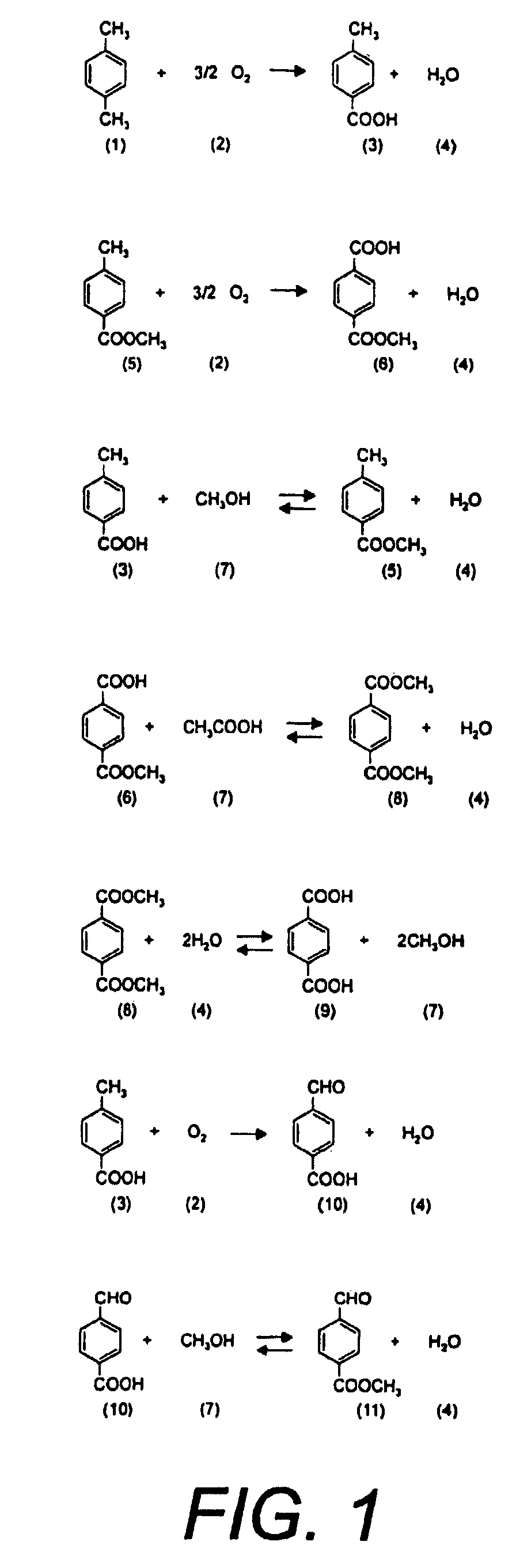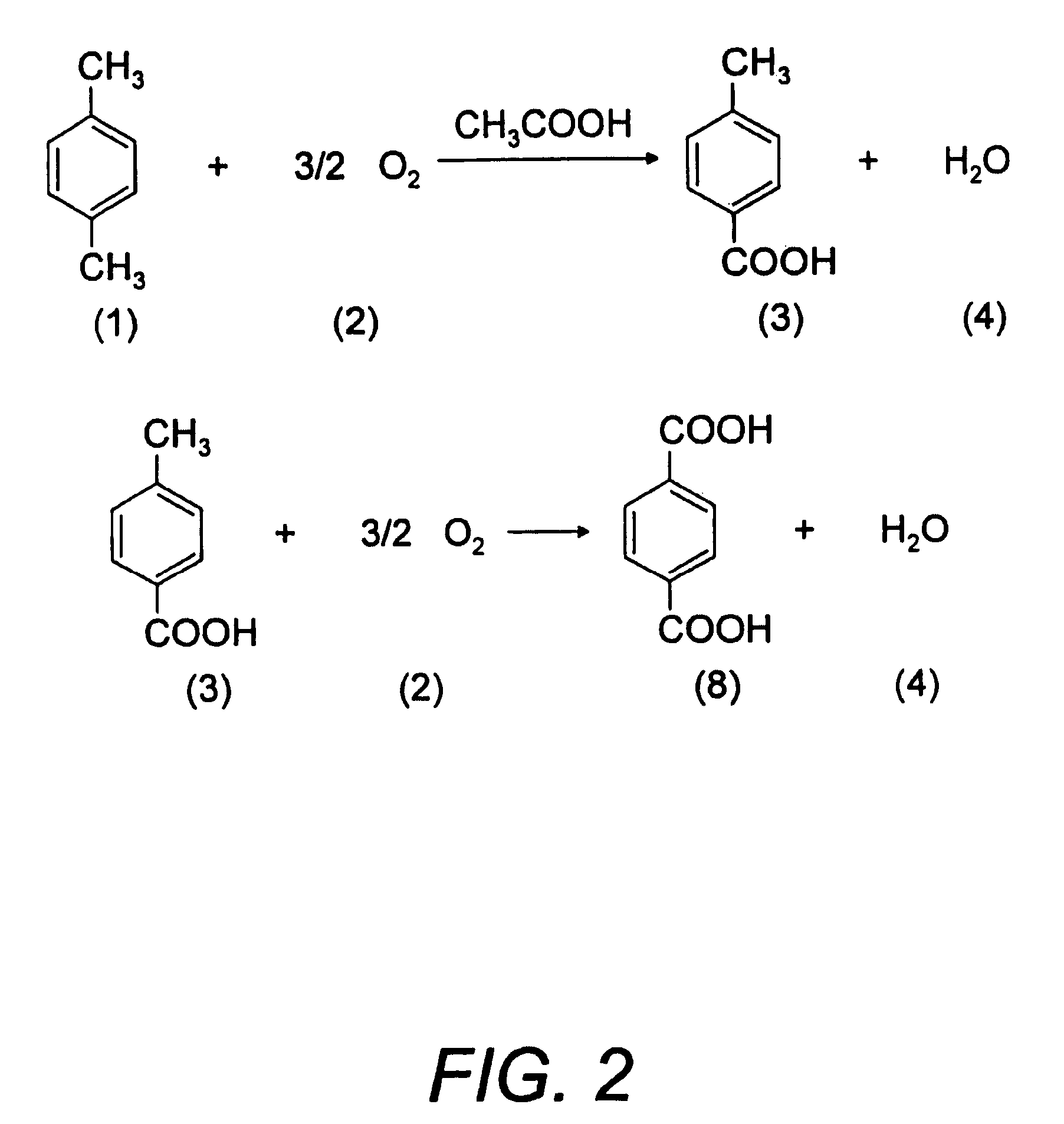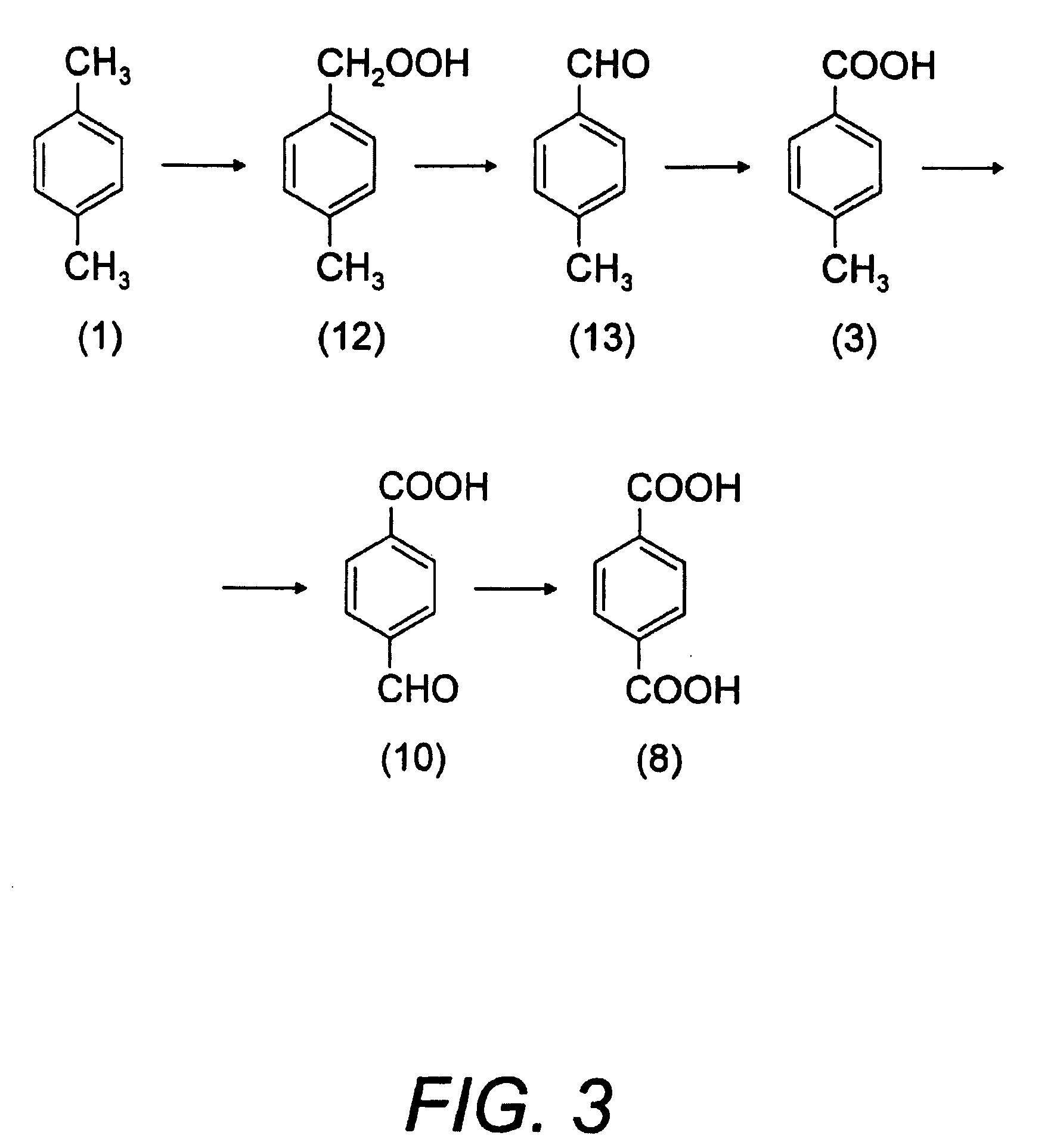Process for Chemical Recycling of Post Consumption Poly(Ethylene Terephthalate) and Equipment for Chemical Recycling of Post Consumption Poly(Ethylene Terephthalate)
a technology of ethylene terephthalate and equipment, applied in the direction of carboxylic acid esters, gas-gas reaction processes, lighting and heating apparatus, etc., can solve the problems of increasing the cost of equipment, reducing the mean molecular weight, and not remaking the molecular weight distribution profile, etc., to achieve effective elimination of pet, promote separation, and low time of permanence of reactive products
- Summary
- Abstract
- Description
- Claims
- Application Information
AI Technical Summary
Benefits of technology
Problems solved by technology
Method used
Image
Examples
Embodiment Construction
[0048] The subject of this Patent of Invention is a “Process for Chemical Recycling of Post Consumption Poly(Ethylene Terephthalate) and Equipment to Perform the Chemical Recycling of Post Consumption Poly(Ethylene Terephthalate)”, constituted by the following steps, for more clarity referring to FIG. 7: feeding of post consumption PET articles and wastes 24 to a preparation area 25 of post consumption PET loading, where it is washed and comminuted to flakes of different sizes ranging from 2 mm×7 mm to 7 mm×10 mm, preferably between 3 mm×6 mm.
[0049] This flake PET 26 is continuously fed to the depolymerizer 27, simultaneously with the feeding of a depolymerization agent, such as caustic soda, caustic potash, soda ash or another appropriate alkali, sulphuric acid, phosphoric acid, methanesulphonic acid, p-toluene sulphonic acid or another appropriate acid, water steam and / or liquid water, as a solution of the above mentioned depolymerizing agents or as a pure product 28 as well as a...
PUM
| Property | Measurement | Unit |
|---|---|---|
| pressure | aaaaa | aaaaa |
| temperature | aaaaa | aaaaa |
| temperature | aaaaa | aaaaa |
Abstract
Description
Claims
Application Information
 Login to View More
Login to View More - R&D
- Intellectual Property
- Life Sciences
- Materials
- Tech Scout
- Unparalleled Data Quality
- Higher Quality Content
- 60% Fewer Hallucinations
Browse by: Latest US Patents, China's latest patents, Technical Efficacy Thesaurus, Application Domain, Technology Topic, Popular Technical Reports.
© 2025 PatSnap. All rights reserved.Legal|Privacy policy|Modern Slavery Act Transparency Statement|Sitemap|About US| Contact US: help@patsnap.com



